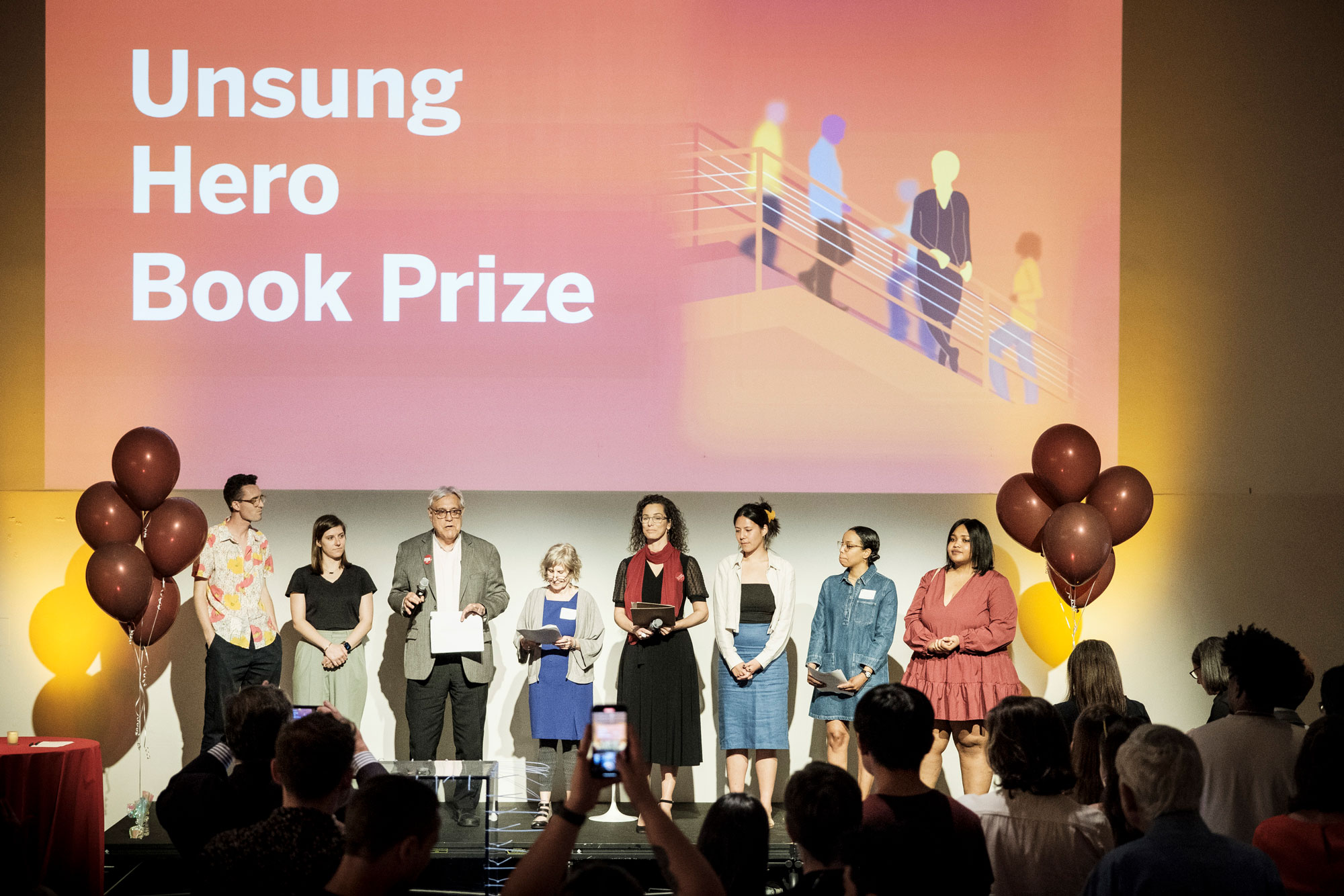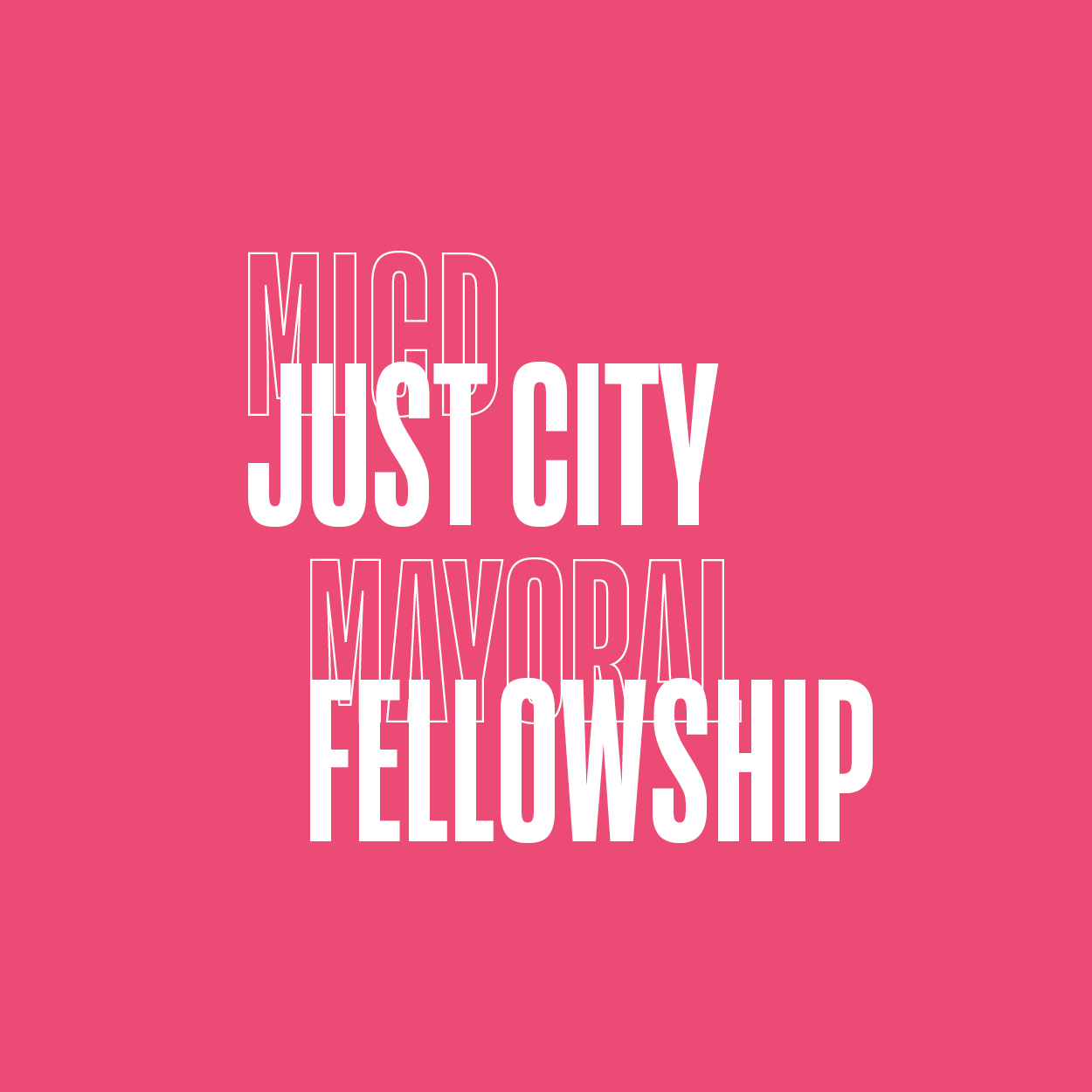Niall Kirkwood Elected Member of the American Academy of Arts & Sciences
The American Academy of Arts & Sciences recently announced that Niall Kirkwood, Charles Elliot Professor of Landscape Architecture, has been elected a member of the honorary society in 2024.
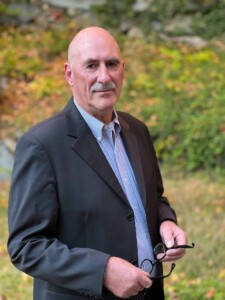
Photo: Orah Moore.
Kirkwood is one of 250 new members—including Apple CEO Tim Cook, author Jhumpa Lahiri, and actor/producer/activist George Clooney—across 31 areas of expertise being recognized for their excellence and dedication to societal issues. “We honor these artists, scholars, scientist, and leaders in the public, non-profit, and private sectors for their accomplishments and for the curiosity, creativity, and courage required to reach new heights,” said President of the Academy David Oxtoby in the organization’s press release. “We invite these exceptional individuals to join in the Academy’s work to address serious challenges and advance the common good.”
According to its mission, the American Academy of Arts & Sciences was founded in 1780 by John Adams, John Hancock, and 60 other scholar-patriots to convene “leaders from every field of human endeavor to examine new ideas, address
issues of importance to the nation and the world, and work together ‘to cultivate every art and science which may tend to advance the interest, honor, dignity and happiness of a free, independent, and virtuous people.’” Previously elected members include Benjamin Franklin (1781), Charles Darwin (1874), Albert Einstein (1924), Margaret Mead (1948), Marin Luther King, Jr. (1966), Madeline K. Albright (2001), and Salman Rushdie (2022).
Induction ceremonies for new members will be held at the Academy’s campus in Cambridge, Massachusetts, in September 2024.
Jungyoon Kim’s firm PARKKIM Wins an International Competition for a Floating Stage Development in South Korea
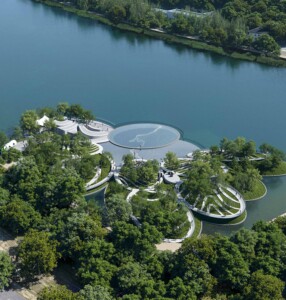
PARKKIM , the Seoul-based landscape architectural firm co-founded by Jungyoon Kim (MLA ’00), assistant professor in practice of landscape architecture at the GSD, with Yoonjin Park (MLA ’00), has won the international competition to design a floating stage for Suseongmot Lake in Daegu, South Korea. Proposals by the four firms invited to the competition, including PARKKIM’s “Suseongmot Floating Hills,” will be showcased in the first annual Suseong International Biennial this fall. The unique floating performance space, part of a multipurpose waterfront park, “aims to awaken the potential of Suseongmot and create a space for new programs, contributing to the revitalization of high-quality outdoor performance culture through the expansion of cultural infrastructure,” according to the competition guidelines released by the Suseong District. A panel of judges chaired by Kim Jun-seong of Hand Plus Architects Office evaluated the proposals by focusing on connectivity with waterside space, usability of space, and originality of design.

The proposed design by PARKKIM features eight sloped oval sections or “hills,” all interconnected by pedestrian walkways. Lushly landscaped with trees and vegetation, the open auditorium concept incorporates both fixed and lawn-type seating and accommodates an audience of 1,500. The platform and stage rest on a hybrid pile-slab structure, a combination of concrete and fiber reinforced polymers. Junya Ishimagi, a Japanese architect, won the concurrent pedestrian bridge competition that will land on the northern edge of the Suseongmot lake, about 100m apart from the Floating Hill stage.
Home to Korea’s largest music festival, the Daegu International Music Festival (DIMP), Daegu is designated as a City of Music by UNESCO. In a statement, Daegu Suseong-gu District Mayor Kim Dae-kwon said, “An excellent work was selected as the winner through an international design contest . . . We will build it as a cultural landmark that goes beyond the region and is world-class.”
In addition to Kim Jun-seong, the judges included Jin-wook Kwon, Yeungnam University; A-yeon Kim, University of Seoul; Jong-guk Lee, Keimyung University; Pil-jun Jeon, Daegwu Catholic University; Daniel Valle, Baye Architects; and John Hong, Seoul National University.
The Suseongmot Performance Hall and Bridge are scheduled to begin construction in 2025 and be completed in 2026.
Kongjian Yu Wins 2023 Cornelia Hahn Oberlander International Landscape Architecture Prize
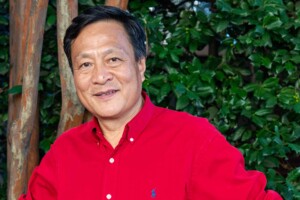
The Cultural Landscape Foundation (TCLF) has named Beijing-based landscape architect Kongjian Yu (DDes ’95) the winner of the 2023 Cornelia Hahn Oberlander International Landscape Architecture Prize , a biennial honor that includes a $100,000 award and two years of public engagement activities focused on the laureate’s work and landscape architecture more broadly.
Yu recently delivered the Sylvester Baxter Lecture at the Graduate School of Design (GSD), “Adaption: Political, Cultural, and Ecological Design—My Journey to Heal the Planet.” His guiding design principles are the appreciation of the ordinary and a deep embrace of nature—even of its potentially destructive aspects, such as flooding. Yu’s thinking about “ecological security patterns” helped shape environmental protection efforts throughout China. And his promotion of the “sponge city” concept, which uses landscape to capture, filter, and store rainfall for future use and reduce flood risks, helped to spur the Chinese government to launch an ambitious sponge city campaign across the country and has gained global attention.
Named in honor of the late landscape architect Cornelia Hahn Oberlander (BLA ’47), the Prize awarded by the TCLF is bestowed on a recipient who is “exceptionally talented, creative, courageous, and visionary” and has “a significant body of built work that exemplifies the art of landscape architecture.”
The international, seven-person Oberlander Prize Jury selected Yu from among more than 300 nominations from across the world. In naming the 2023 winner, the Oberlander Prize Jury Citation noted of Yu, he is a “brilliant and prolific designer … [who] is also a force for progressive change in landscape architecture around the world.”
“He lives and breathes his conviction that landscape architecture is the discipline to lead effective responses to the climate crisis,” said TCLF President & CEO Charles A. Birnbaum.
Gary R. Hilderbrand, Peter Louis Hornbeck Professor in Practice of Landscape Architecture and Chair of the Department of Landscape Architecture at the GSD, adds that Yu is the “all-time greatest spokesperson for landscape architecture in China—a nation that needs environmental rescue on a colossal scale.”
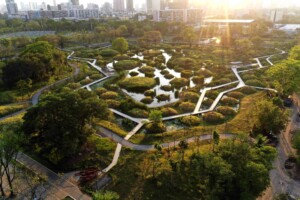
Yu is Professor and founding dean of Peking University College of Architecture and Landscape, and founder and design principal of Turenscape . His projects have won numerous international design awards, including 14 ASLA Excellence and Honor Awards and seven WAF Best Landscape Architecture of the Year Award. Yu is also the author of over 20 books and more than 300 papers and is the founder and chief editor of the internationally awarded magazine Landscape Architecture Frontiers. Yu was elected International Honorary Member of the American Academy of Arts and Sciences in 2016 and received the IFLA’s highest honor, the Sir Geoffrey Jellicoe Award, in 2020, which celebrates a living landscape architect whose “achievements and contributions have had a unique and lasting impact on the welfare of society.”
The Cultural Landscape Foundation, founded in 1998, is a 501(c)(3) non-profit founded in 1998 to connect people to places. TCLF educates and engages the public to make our shared landscape heritage more visible, identify its value, and empower its stewards. Through its website, publishing, lectures, and other events, TCLF broadens support and understanding for cultural landscapes.
Honoring the GSD’s 2023 Unsung Heroes
The Harvard University Graduate School of Design’s (GSD) Alumni Council and the GSD’s Frances Loeb Library are pleased to honor four students with the 2023 Unsung Hero Book Prize. This year’s honorees are Alexandra Barnes (MDes ’23), Tobi Fagbule (MDes ’23), Cory Page (MLA/MUP ’25), and Ellie Sheild (MUP ’23, MRE ’24).
“Each year, I am surprised and delighted to learn of the many ways that unsung heroes make life at the GSD memorable,” said Alumni Council member and award co-chair John di Domenico (MAUD ’79). “Even more gratifying is the positive vibe in the room during the award ceremony. It is a celebration of the GSD as a diverse community, passionate about working together to make our world—near and far—a better place.”
Deserving students are nominated for the Unsung Hero Book Prize each spring by fellow GSD students, faculty, and staff, and winners are selected by the Alumni Council. Now in its 17th year, this award received 65 nominations for 38 different students.
Prize recipients are recognized with a book of their choice by the Alumni Council; a second book is donated to the Loeb Library with a bookplate.
“This year’s award winners have had both the bravery to speak up on behalf of their peers and their values, and the persistence to follow change through to fruition,” said Nicole Santiago, the Research, Teaching, and Writing Services Librarian at the Loeb Library. “It’s energizing to see how they bolster the greater common good of the student body and make the GSD a more diverse and sustainable place for their peers and for future students. Their range of unique identities and perspectives are reflected in the diversity of titles they’ve selected to be added to our library collections.”
The four 2023 Unsung Heroes received universal praise from their peers for their leadership, advocacy, service, mentorship, kindness, and generosity. Nominators noted that these students routinely went above and beyond to organize inclusive events, create welcoming environments, and support their classmates.
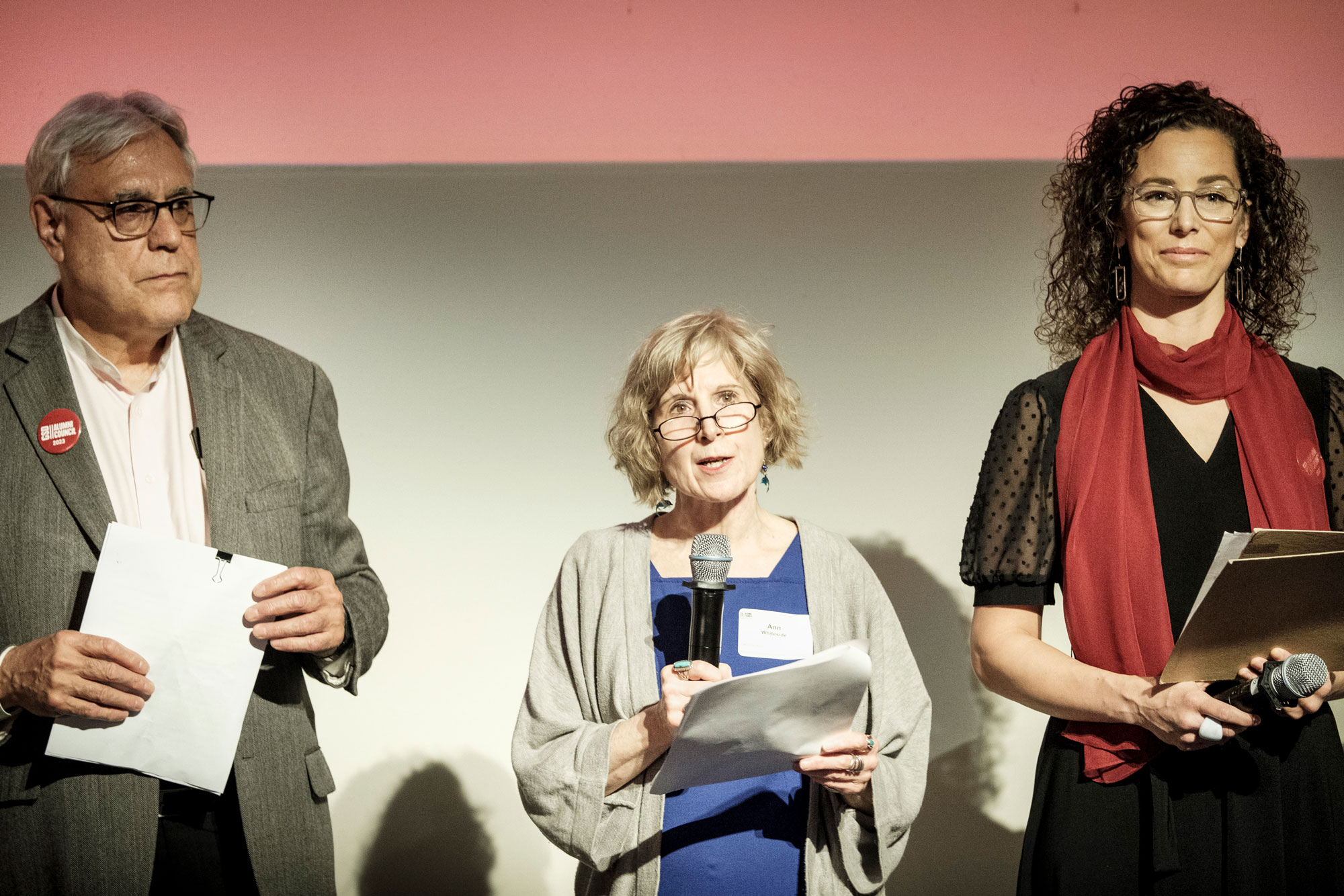
“Nominations came in from both students and faculty and extended across all Graduate School of Design disciplines,” said Alumni Council member and award co-chair Beth Roloff MArch ’14. “There were consistent themes of selflessness, inclusion, having a passion for a cause, and making a notable impact on the GSD community.”
Alexandra Po Bae Pak Barnes has her roots in Seoul, Korea and Talala, Oklahoma. Her design work and research interests at the GSD have grown out of the needs of aging and vulnerable communities to create inclusive socio-spatial environments. These needs exist on multiple scales and encompass housing development and home ownership policies, community engagement and advocacy, the shifting societal and cultural roles of families and caregivers, and environmental migration.
Alexandra has been involved with student government since the beginning of her Master in Design Studies degree, first as a student representative for the Publics domain and later as Professional Development chair on the Student Forum, where she worked closely with Career Services, Alumni Relations, and the Office of Student Affairs. She holds a bachelor of architecture from Oklahoma State University and has worked at Pelli Clarke & Partners, where she designed mixed-use, large-scale commercial and residential projects, including the American Airlines Campus in Dallas, Texas, and the Gioia 22 office tower in Milan, Italy.
For her book, Alexandra selected Young-Old: Urban Utopias of an Aging Society by Deane Simpson. On receiving the award, Alexandra said, “It takes a village, and I am deeply honored to be recognized by my robust, eclectic community. These folks—my peers, professors, staff—have been instrumental during my time here at the GSD. They have been a village—inspiring, motivating, and supporting one another. I’m grateful for the lessons and memories cultivated here. As I transition into being an alum, it’s important to remember where you came from and how you got to where you are today, to take the time to extend a helping hand and cultivate an intergenerational community of care. On that note, I’d like to extend my thanks to my dear family and friends, who have been the root of how I also got to where I am today.”
Oluwatobiloba “Tobi” Fagbule is from Port Harcourt, Nigeria, and studied architecture at Iowa State University prior to arriving at the GSD. She has served in student government as the Diversity, Inclusion, and Belonging chair on the Student Forum, and is also the Social/Events chair of Africa GSD and the African American Student Union. In addition, she is a Materials Lab curatorial intern at the Harvard Art Museum and a technical assistant in the Fabrication Lab. Her interests lie at the intersection of sustainability, culture, decolonization, and landscapes of extraction.
Tobi selected Architectural Guide: Sub-Saharan Africa, edited by Adil Dalbai and Philipp Meuser, as her book. Of receiving the award, Tobi said, “When I first got the email that I was a recipient of the award, I was surprised; it was such an honor. The community of friends I have created here is so supportive. This award was super heartfelt, and I felt loved miles away from home.”
Cory Page grew up in Telluride, Colorado, and obtained his bachelor’s degree in environmental policy and studio art from Colorado College. He began his career on Disney’s environmental sustainability team, where he garnered a global perspective on environmental issues. During his time at Disney, he identified a pressing need to combine environmental sustainability and design. He continued his career at the South Pole, working with companies to set science-based targets for mitigating climate change. Cory brings his background in climate change policies to the GSD’s Master in Landscape Architecture and Master in Urban Planning programs to create holistic sustainability solutions.
Cory selected Mississippi Floods: Designing a Shifting Landscape by Anuradha Mathur and Dilip da Cunha as his book. On receiving the award, Cory said, “Receiving the 2022-2023 Unsung Hero Award alongside my three other GSD colleagues was such an incredible honor. The GSD community is remarkable—I am consistently amazed by the work of the students, faculty, and staff in Gund Hall. This recognition reflects the exceptional work we can do and the changes we can make as a diverse collective of designers. I selected Mississippi Floods: Designing a Shifting Landscape for the Loeb Library because the book serves as a visual reminder of the implications of human disruption to natural systems.”
Elizabeth “Ellie” Sheild was born and raised in Charlotte, North Carolina, and has a professional background in city planning with a primary focus in zoning and land use. In addition to receiving a Master in Urban Planning degree this year, Ellie is a member of the first incoming class of the GSD’s Master in Real Estate degree (to be conferred in 2024). She finds sincere enjoyment as a teaching assistant and as a volunteer on the MUP Recruitment Committee and for the GSD Outdoors Club. In addition, Ellie works as a research assistant at Harvard’s Joint Center for Housing Studies, where she is currently the lead author on a forthcoming paper about accessory dwelling units. In her free time, she loves exploring the beauty of New England, hiking, biking, and kayaking with her friends and family.
Ellie selected The Night is Yours, which is written by Abdul-Razak Zachariah (EDM ’21, MUP ’23) and illustrated by Keturah A. Bobo. On receiving the award, Ellie said, “The Unsung Hero Book prize holds special meaning to me because it is a peer-nominated award. It is my peers that have made my time at the GSD exciting, stimulating, and fun. In keeping with the spirit of honoring others, I have dedicated my book selection to my classmate, Abdul-Razak Zachariah. His published book, The Night is Yours, centers on a young girl playing an evening game of hide and seek in an apartment courtyard that allowed ‘for children of color to play without ridicule or restriction’ in an area of open seclusion ‘that makes the complex welcoming but also uniquely ours.’ The story shows the “kind of community that we at the GSD have the capacity to build when we center the wealth that comes from community care rather than individualism,” according to Abdul-Razak.
“In my opinion, MUPs do an amazing job of supporting and uplifting one another, so I am incredibly honored my classmates would consider me for this award. I am also grateful for the love and support from my partner, family, and friends, who all surprised me at the award ceremony. So, counter to the award’s name, I have always felt ‘sung’ in my contributions to the GSD community because of the wonderful people around me at the GSD.”
Hannah Teicher awarded MURI research grant to study climate resilience
Hannah Teicher, Assistant Professor of Urban Planning, will be part of a research team receiving a $5.6 million grant through the Multidisciplinary University Research Initiative (MURI) program, funded by the United States Department of Defense (DoD). Teicher will act as co-principal investigator for Sea-Level Rise in the Indo-Pacific Region: Building a Framework for Interdependent Resilience, a five-year project that will develop adaptation pathways for military island communities vulnerable to sea-level rise.
In case studies in Hawaii and Guam, the team will develop a decision-making framework that integrates social and organizational factors with awareness of sea-level rise risks to utilities, transportation, and infrastructure. Considering a long history of military engagement in these urban communities, the team will investigate previous joint decision-making efforts, barriers and enablers to adaptation planning, and how the disproportionate impacts on vulnerable communities can be addressed in this context. The project will have implications for the broader region and small island nations facing dramatic sea-level rise impacts.
Teicher will join Christine Kirchhoff, Associate Professor in the School of Engineering Design and Innovation at Penn State University; Peter Ruggiero, Associate Professor in the College of Earth, Ocean, and Atmospheric Sciences at Oregon State University; and Mark Merrifield, Principal Investigator, Director of the Center for Climate Change Impacts and Adaptation at the University of California San Diego.
In March, the DoD announced $220 million in awards for basic research projects as part of the MURI program. At an average award amount of $7.1 million over five years, these competitive grants will support 31 teams located at 61 U.S. academic institutions.
Diane Davis and Gareth Doherty join the Salata Institute’s Climate Research Clusters
Diane Davis, Charles Dyer Norton Professor of Regional Planning and Urbanism, and Gareth Doherty, Associate Professor of Landscape Architecture and Director of the Master in Landscape Architecture Program, are among the recipients of the first grants awarded by Harvard’s Salata Institute for Climate and Sustainability . The awarded grants will tackle a range of climate change challenges, seeking to reduce future warming and assist those whose lives already have been affected by the crisis.
The grants to five research clusters will provide more than $8.1 million over three years to projects that bring together 30 faculty members from disciplines spanning Harvard Law School, Harvard Business School, the Harvard T.H. Chan School of Public Health, Harvard Medical School, Harvard Kennedy School, the Graduate School of Design, the John A. Paulson School of Engineering and Applied Sciences, and the Faculty of Arts and Sciences.
Diane Davis will take part in “Strengthening Communities ,” a cluster organized to probe the social costs and benefits of changes in the energy system, and propose concrete ways communities, firms, and governments to help them navigate the wide range of fiscal, legal, regulatory, and development choices they face. The cluster focuses on two principal social challenges, which occur at multiple scales: the disruptions and opportunities arising from the adoption of new technologies, including dislocations as communities move away from fossil fuels or shift to a new energy mix.
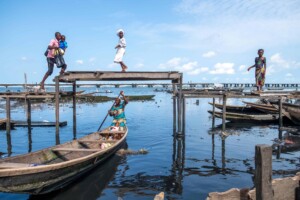
Gareth Doherty will contribute to “Climate Adaptation in the Gulf of Guinea ,” a research team focusing on coastal communities in Abidjan, Accra, and Lagos that are at risk from sea-level rise and compounding impacts, such as flooding, saltwater intrusion, storm surge, and coastal erosion. In these communities, and other coastal ones in Africa, sea-level rise is jeopardizing livelihoods, impeding tourism, and damaging traditional fishing grounds. The goal of the project, therefore, is to identify viable climate adaptation strategies.
Throughout the week of May 8th Harvard Schools, centers, and student groups will host an array of climate events with leading experts, including the Salata Institute’s first annual symposium on May 9th.
The Salata Institute launched in June and is supported by a $200 million gift from Melanie and Jean Salata. During the institute’s opening symposium in October, Jean Salata said he’s confident that the world will meet the climate change challenge, though the work will be difficult and require contributions from all aspects of society.
Building a Future at Harvard
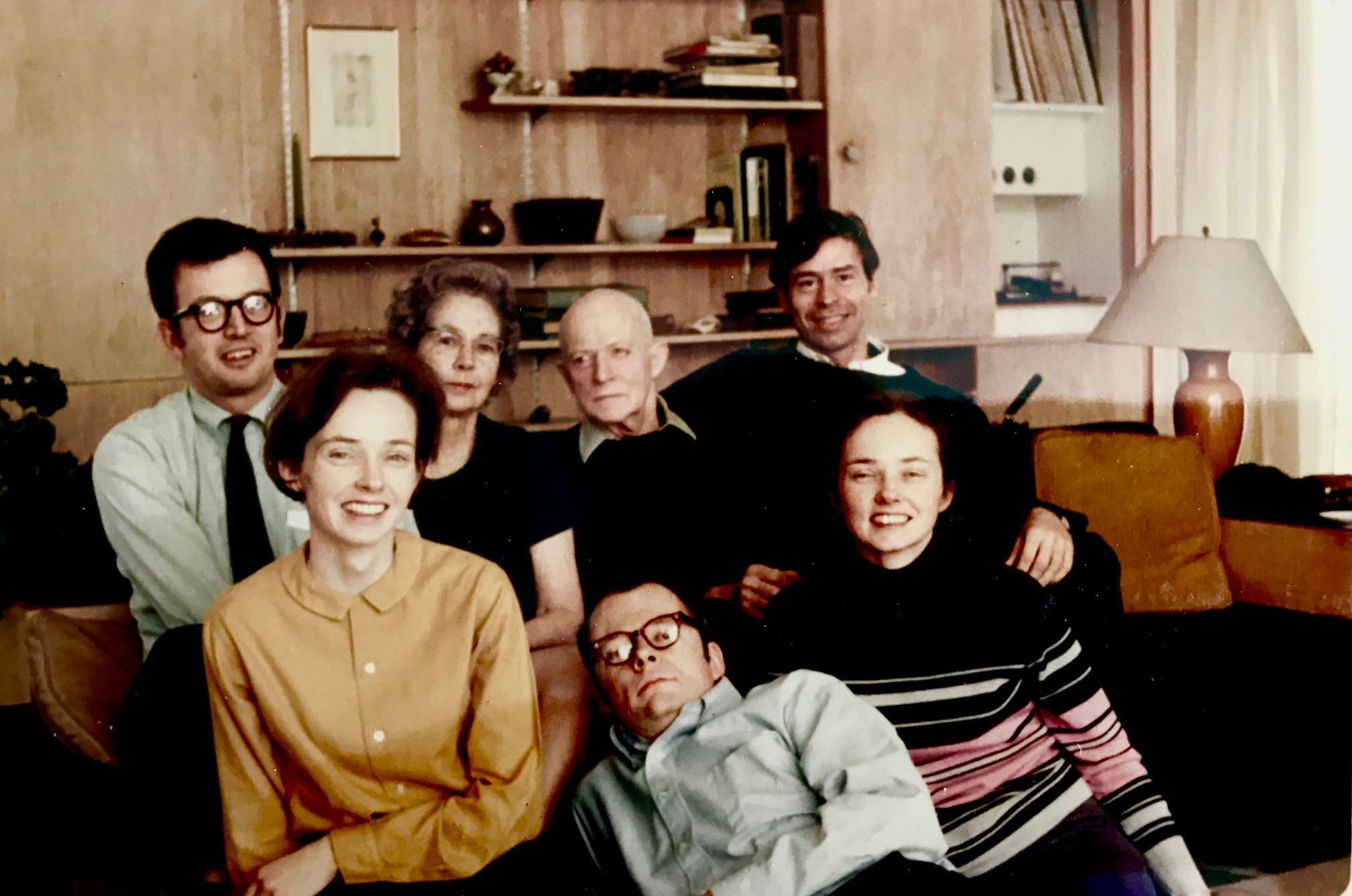
Henry B. Hoover (March ’26) is considered a pioneer of New England modernist architecture. He designed more than 50 modern houses in his hometown of Lincoln, Mass., and other suburbs west of Boston, as well as houses in New Hampshire, Georgia, and Florida.
The quality of his GSD education and the financial assistance Hoover received at Harvard inspired his three children—Henry B. (Harry) Hoover, Jr., Lucretia Hoover Giese PhD ’85 (1937-2018), and Elizabeth Hoover Norman PhD ’05 (1937-2010)—to establish the Henry B. Hoover Fellowship at the GSD in 1989. Since then, further outright, planned, and estate gifts from the siblings ensure that their father’s legacy lives on.
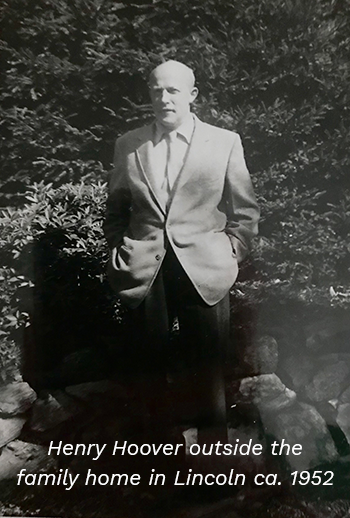
A portion of the sale of the family home in Lincoln, which their father designed in 1937, was added to the Hoover Fellowship in 2020 through a bequest from Lucretia’s estate and this year a charitable gift annuity from Harry brought the endowed fund to full fellowship status. This long-term commitment has made it possible for the GSD to award the fellowship to a student every year.
“I’ve been honored to meet these awardees and even give them a tour of my father’s architectural work in my town of Lincoln and other communities,” Harry said. “They come to know Hoover as a person who had aspirations and experiences just like they have now.”
“The training he received at Harvard was so important to him,” Lucretia had said. “That’s why we decided to establish a fund to provide scholarships to students who would not otherwise be able to attend Harvard. Our father had received a scholarship that enabled him to study at Harvard. The support of his professors, especially George H. Edgell (then dean of the School of Architecture), profoundly affected his career.”
“All three of us revered our father,” Harry said of himself and his sisters. “This fellowship was a natural outpouring of our affection and respect.”
Hoover won the Charles Eliot Prize and two traveling fellowships, the Frederick Sheldon and Nelson Robinson, Jr. Fellowships. He also became the first recipient of the Eugene Dodd Medal for excellence in draftsmanship.
“He had a really direct relationship with buildings—buildings he designed, as well as those he experienced,” Harry said. “After graduation, Hoover produced a series of drawings of Harvard buildings. His architectural drawings were not mere elevations; he was able to relate buildings to their sites with extraordinary clarity, producing drawings of consummate draftsmanship and liveliness.”
“One legacy of our father was to create houses that would enhance quality of life. Now we’ve had the opportunity as a family to celebrate his life,” Harry says.
That celebration is now carrying through to the next generation and inspiring others with connections to Hoover to support the fellowship.
“My wife and I have preserved one of Henry Hoover’s houses and are privileged daily to enjoy that enhanced quality of life to which Harry refers,” said Brooks Mostue March ’76. “The nuanced views, careful siting, and beautiful utility of the house and its setting attest to Henry’s talent and vision. As a GSD fellowship recipient, I am keenly aware of the positive impact endowments have on students’ careers and the built environment. I am grateful to the Hoover family for their generosity.”
Harry added, “We’re fortunate that through my father’s legacy, we can bring this opportunity to well-deserving and accomplished people who are the best qualified to carry our father’s work, vision, and spirit onward.”
Designing a Multidisciplinary Future at the GSD

Bart Voorsanger MArch ’64 understands the value of connected multidisciplinary design. The founding partner and principal of Voorsanger Architects PC in New York City, his firm works on projects ranging from small residential interiors to multi-million dollar residential and institutional buildings, many of which involve collaborations within other design disciplines. Voorsanger sees a future in which design disciplines increasingly intermingle. To ensure that students at the GSD are at the forefront of these intersections, he established the Voorsanger Fellowship Fund. The fund will support four top-performing students, one from each of the GSD’s disciplines—architecture, urban planning, landscape architecture, and design studies—who hold “great promise for making a significant contribution to these fields.”
“The future of design is this absolute, multidimensional world of integrating design disciplines. We’re all overlapping, and there are fewer barriers between them,” he says. Harvard has an ambitious, kaleidoscopic mix of professional talent at the GSD that will not only contribute to the quality of the students’ educational experience but will also sustain a level of excellence and reputation to assure the future of significant design contributions in the public realm.
Voorsanger believes that creating synergies and producing outcomes across disciplines is vital to the mission of the GSD. The Voorsanger Fellowship Fund stipulates that the four selected finalists come together annually to present to the GSD community in the connected fields of their studies. Voorsanger’s ultimate wish is that the fellows be able to focus on their passion for their work, unhindered by concerns about student loan debt. “The GSD has continued to excel in both the art and practice of architecture, which are two very different things, keeping them in a state of colloidal excellence,” he says. “It’s really extraordinary, and I hope my gift will inspire other architects and those who love design to support the GSD and encourage the best to come to Harvard.”
Announcing the 2023 MICD Just City Mayoral Fellowship
The Just City Lab at the Harvard Graduate School of Design and the Mayors’ Institute on City Design (MICD) are pleased to announce the launch of the 2023 MICD Just City Mayoral Fellowship , taking place in a hybrid virtual and in-person format in Spring 2023.
The 2023 Fellowship will help mayors develop and strengthen approaches to embedding justice and equity goals within government policy and practices, as well as help mayors design strategies for achieving more just and equitable outcomes within their communities. This year’s cohort of mayors will be introduced to the concepts of social impact and justice-centered design, equity framework measurement tools, and innovative design practices that increase just and equitable outcomes. Building from past Fellowships, this year’s program will continue to explore ways to create lasting, transformational impacts from new federal funding streams such as the Infrastructure Investment and Jobs Act and the American Rescue Plan Act.
The Just City Lab is a design lab located within the GSD and led by architect and urban planner Toni L. Griffin. The Lab has developed nearly 10 years of publications, case studies, convening tools and exhibitions that examine how design and planning can have a positive impact of addressing the long-standing conditions of social and spatial injustice in cities. The Mayors’ Institute on City Design (MICD), the nation’s preeminent forum for mayors to address city design and development issues, is a leadership initiative of the National Endowment for the Arts in partnership with the United States Conference of Mayors . Since 1986, MICD has helped transform communities through design by preparing mayors to be the chief urban designers of their cities.
The Lab’s Just City Index will frame dynamic presentations and dialogues with experts in the fields of architecture, landscape architecture, urban planning, art activism, housing, and public policy. Over the semester-long program, mayors will identify how injustices manifest in the social, economic, and physical infrastructures of their cities and develop manifestos of action for their communities.
The 2023 MICD Just City Mayoral Fellows are: Albany, NY Mayor Kathy Sheehan; Albuquerque, NM Mayor Tim Keller; Arlington, TX Mayor Jim Ross; Kansas City, MO Mayor Quinton Lucas; Monroe, LA Mayor Friday Ellis; Pensacola, FL Mayor D.C. Reeves; Santa Fe, NM Mayor Alan Webber; and St. Louis, MO Mayor Tishaura O. Jones.
“I’m delighted to see this powerful collaboration between the Just City Lab and the Mayors’ Institute on City Design continue for a third year,” said Sarah Whiting, dean and Josep Lluís Sert Professor of the Harvard Graduate School of Design. “This year’s cohort of mayors comes from the most diverse group of cities yet–from the southwest to the northeast, with a wide range of population sizes. We welcome them to the Graduate School of Design, where they will have an opportunity to engage with our faculty and students, learning from our justice-centered curriculum and research, and leaving with new expertise to further equity and opportunity in each of their cities.”
“The Just City Mayoral Fellowship is a powerful example of how arts and design help us to examine our reality, imagine a better future, and ensure our cities reflect the ideals we aspire to as a nation,” said Maria Rosario Jackson, PhD, chair of the National Endowment for the Arts . “This program recognizes the critical role that mayors play in driving local change and I look forward to seeing how they use this experience to bolster justice and equity in their communities.”
“Mayors are leading our cities through a transformative time, using new federal funding streams to create once-in-a-generation change,” says Tom Cochran, CEO and executive director of the United States Conference of Mayors . “They are tasked with uniting their communities around real solutions and making the most of these transformational investments. The traditional MICD experience, with its candid, small-group format and access to national design experts, is so often transformative for mayors. There is no better model for empowering mayors to find solutions in our nation’s cities, and the United States Conference of Mayors is proud to partner with the Just City Lab to help guide mayors through this important chapter of American history.”
On April 21, the 2023 Fellows will come together for Mayors Imagining the Just City: Volume 3 to discuss strategies for using planning and design interventions to address racial injustice in each of their cities. The program will be free and open to the public.
Learn more about the host organizations at www.micd.org and www.designforthejustcity.org .
Parts of this press release also appeared on the MICD website .
Grand Paris Express Wins 2023 Veronica Rudge Green Prize in Urban Design
The Harvard University Graduate School of Design (GSD) is pleased to announce that the 14th Veronica Rudge Green Prize in Urban Design has been awarded to the Grand Paris Express, a large-scale transit project currently being built in and around the Paris metropolitan area. Through carefully articulated design interventions, the Grand Paris Express illustrates the potential for the planning and execution of mobility infrastructure to transform a city and its region. Société du Grand Paris , a national agency responsible for designing, creating, and implementing the Grand Paris Express, will receive the $50,000 USD prize and recognition for the continued stewardship behind the project.
Established in 1986, the biennial Green Prize recognizes projects that make an exemplary contribution to the public realm of a city, improve the quality of life in that context, and demonstrate a humane and worthwhile direction for the design of urban environments. Eligible projects must include more than one building or open space constructed in the last 10 years.
With 68 new stations and 200 kilometers of additional tracks, as well as extensions of existing metro lines, the Grand Paris Express is currently the largest urban design project in Europe. Its four new lines will circle around the capital and provide connections with Paris’s three airports, developing neighborhoods, business districts, and research clusters. It will service more than 100 municipalities, 165,000 companies, and the daily transport of 2,000,000 commuters. Construction work began mid-June 2016 and is due to last until 2030.
The overarching goals of the Grand Paris Express are to address the issue of the Paris monocentric model and to conceive a more open-minded design for urban mass transportation. It also strives to prioritize efficient forms of mobility by diminishing reliance on private automobiles and lowering the carbon footprint of this megalopolis. As a large-scale enterprise, the project aims to improve mobility patterns to make Paris more sustainable by creating rapid and nonpolluting connections between existing outskirts and new emerging developments. These connections, in turn, generate new centralities within the knowledge-based economy. The infrastructure layout is logical, with a signature external double loop partially overlapping the city center to provide connections between external sectors without crossing through the central area.
Architectural projects tied to the Grand Paris Express are fully independent, and are undertaken as collaborations between architects, designers, and artists, with individual sites addressing the specific conditions of each stakeholder. Every sector is committed to participatory processes in which the community considers issues of social inclusion and programming aspirations. And all projects adhere to an overall brief and principles, taking into account the public plaza and future programs developed at each location. The overall organization of urban projects is demonstrated through steps that ensure goals can be met on a realistic and well-defined timeline.
The Grand Paris Express is expected to contribute particularly to the “banlieue” zones, or suburbs of Paris, and create room for new housing programs and economic initiatives. By employing environmental practices, the construction process will also encourage biodiversity and effectively merge sites into the built landscape. After being extracted during tunneling, for example, soil is recycled throughout the sites, and low-carbon concrete is used to reduce building emissions.
Infused with a dedication to experimentation, realized through constant negotiation between city officials, motivated designers, and mobilized citizens, and committed to educating other cities about implementation pathways, the Grand Paris Express sets a new standard for innovation in the field of urban design and the construction of sustainable territory
This year’s jury committee includes Eve Blau, adjunct professor of the history and theory of urban form and design at the GSD; Maurice Cox, commissioner of the Department of Planning and Development of the City of Chicago; Gary Hilderbrand, Peter Louis Hornbeck Professor in Practice of Landscape Architecture and chair of the Department of Landscape Architecture at the GSD; and Ron Witte, professor in residence of architecture at the GSD; and chaired by Joan Busquets, Martin Bucksbaum Professor in Practice in Urban Projects at the GSD.
Grand Paris Express: Reconfiguring the City through Radical Infrastructure, an exhibition coinciding with the prize, will be on display at Druker Design Gallery from January 23, 2023, through March 31, 2023. Curated by Joan Busquets, Martin Bucksbaum Professor in Practice of Urban Planning and Design, the exhibition showcases models, renderings, documentary photographs, and video footage of this vast and ambitious urban design project. A public lecture and reception for the exhibition is scheduled for Thursday, March 2 (6:30 p.m.) at Piper Auditorium.
For more information about the Prize and to see a list of previously awarded projects, please visit the Veronica Rudge Green Prize in Urban Design website.
